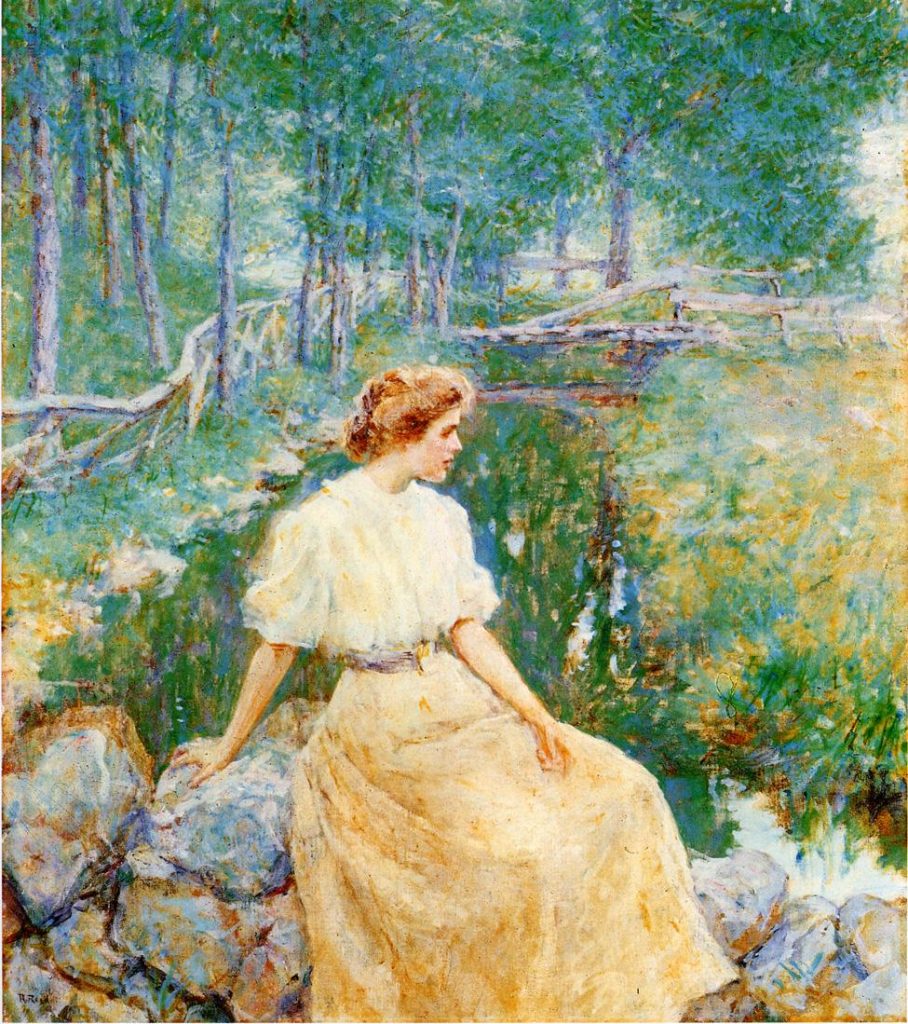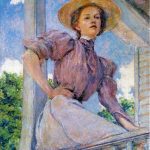
Robert Lewis Reid was born in Stockbridge, Massachusetts and attended the School of the Museum of Fine Arts, Boston under Otto Grundmann, where he was later an instructor. In 1884 he moved to New York City, studying at the Art Students League, and in 1885 he went to Paris to study at the Académie Julian under Gustave Boulanger and Jules Joseph Lefebvre. His early pictures were figures of French peasants, painted at Étaples.
He painted three murals for the Manufactures Building at the 1893 World’s Columbian Exposition in Chicago, and exhibited four paintings in its Fine Arts Building. His work, including the tragic Her First Born (1888), was awarded a medal for excellence.
Reid was a member of the Ten American Painters, who seceded from the Society of American Artists in 1897. His painting Dawn was awarded the 1898 First Hallgarten Prize by the National Academy of Design.
Reid worked on several mural projects around the turn of the century. When he returned to paintings, around 1905, his work was more naturalistic, and his palette tended toward soft pastels.
Reid’s murals are in the Library of Congress in Washington, D.C., and the Appellate Court House in New York City. The Rotunda of the Massachusetts State House in Boston contains his three large mural panels—James Otis Delivering his Speech against the Writs of Assistance, Paul Revere’s Ride, and The Boston Tea Party. He executed a mural panel for the American Pavilion at the 1900 Exposition Universelle in Paris.
His murals for the Palace of Fine Arts building at the Panama–Pacific International Exposition (San Francisco, 1915) were an extraordinary tribute to the Arts. Eight huge panels graced the ceiling of the rotunda: The Four Golds of California (Golden Metal, Wheat, Citrus Fruits, and Poppies); plus Ideals in Art, Inspirations of All Arts, the Birth of European Art and Birth of Oriental Art These paintings no longer exist in San Francisco’s Palace of Fine Arts, which was re-built in the 1960s, and their current whereabouts are unknown.
Upon returning to New York in 1889, he worked as a portraitist and later became an instructor at the Art Students League and Cooper Union. Source: Wikipedia.




